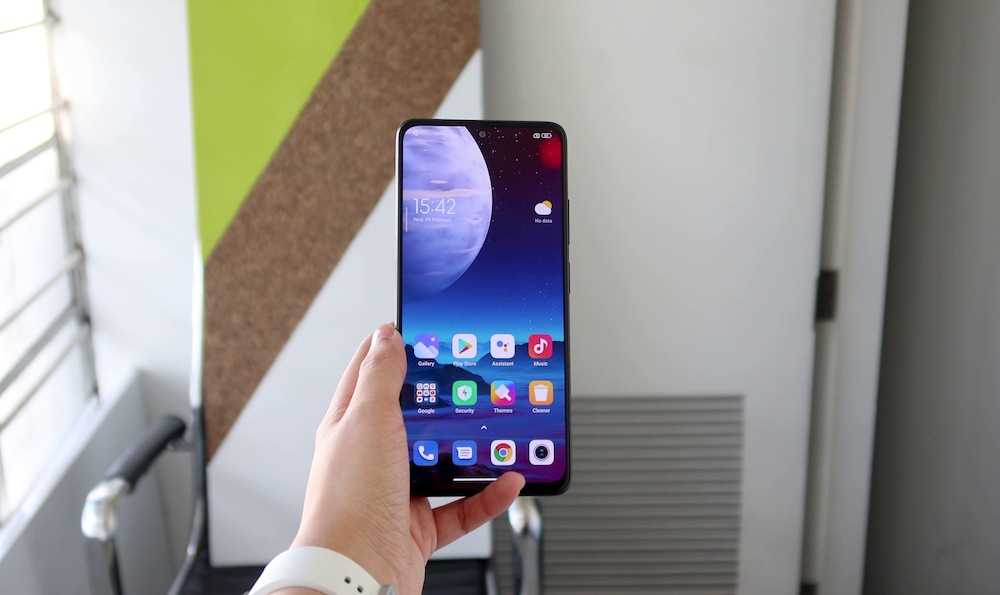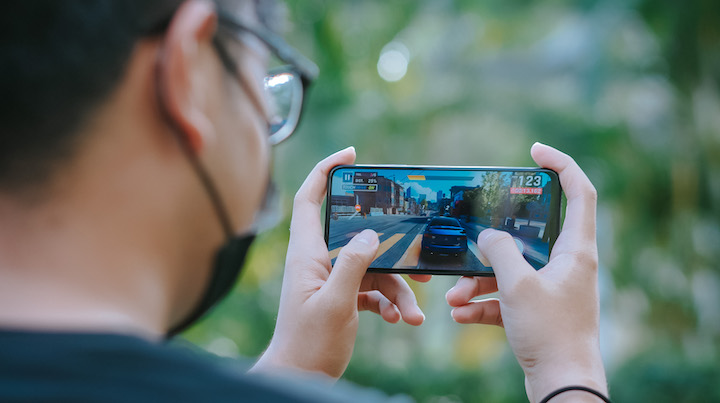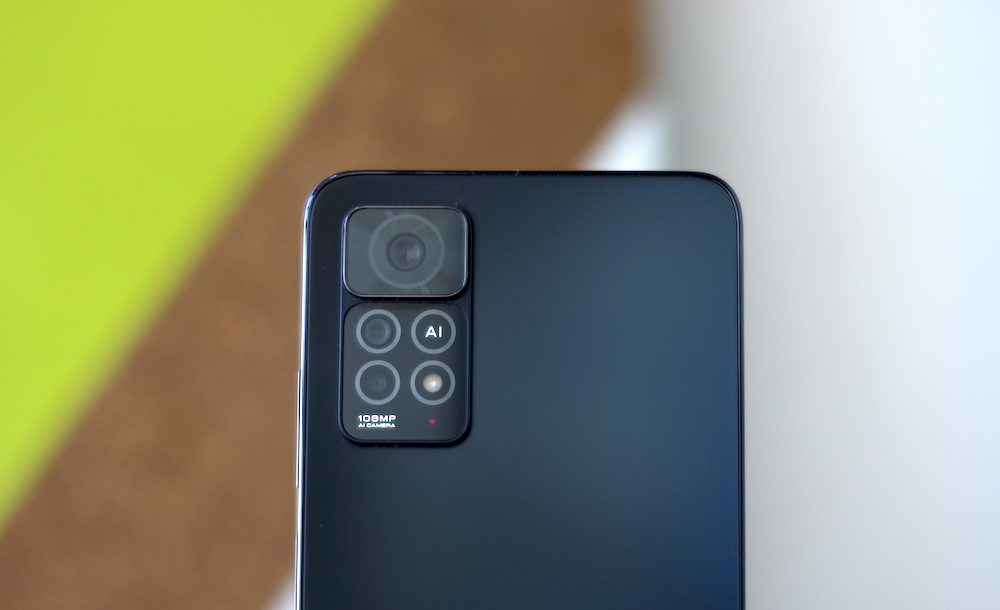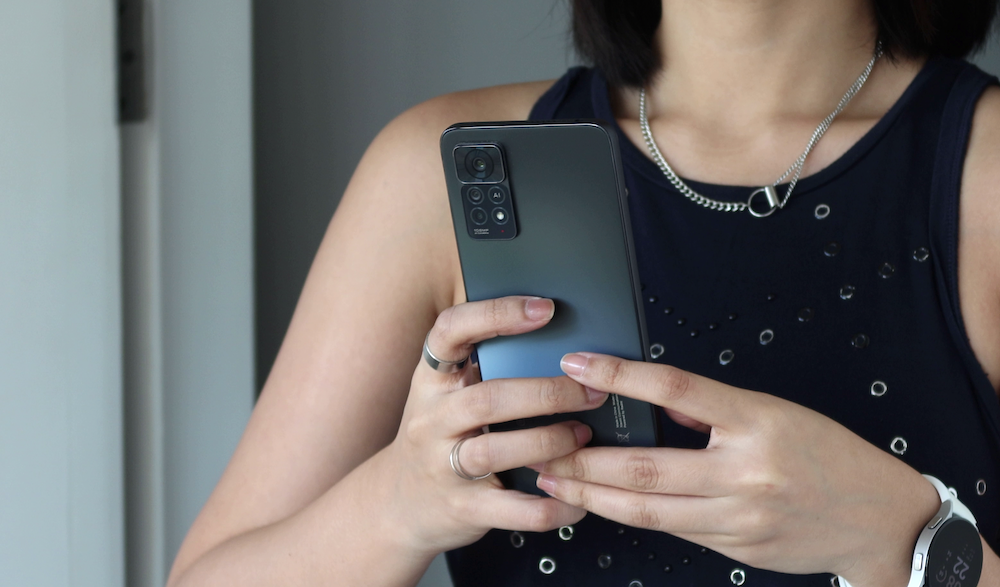Xiaomi’s current flagship models of its Note series have a whole range of variations that selecting just one may leave you stumped. There’s the Redmi Note 11, Note 11S, Note 11 Pro 5G, and the Note 11 Pro+ 5G. And while all offer a great value for money, you may just be left scratching your head in choosing which suits your needs best. So we’ve created this guide to help you in choosing which Redmi Note 11 series phone to get! Let’s get to it!

| Xiaomi Redmi Note 11 | Xiaomi Redmi Note 11S | Xiaomi Redmi Note 11 Pro 5G | Xiaomi Redmi Note 11 Pro+ 5G | ||
|---|---|---|---|---|---|
| 6.43-inch FHD+ (2400 x 1080) AMOLED display | 6.43-inch FHD+ (2400 x 1080) AMOLED display | 6.67-inch FHD+ (2400 x 1080) AMOLED display | 6.67-inch FHD+ (2400 x 1080) AMOLED display | ||
| 90Hz refresh rate, 180Hz touch sampling rate | 90Hz refresh rate, 180Hz touch sampling rate | 120Hz refresh rate, 360Hz touch sampling rate | 120Hz refresh rate, 360Hz touch sampling rate | ||
| Corning Gorilla Glass 3 front | Corning Gorilla Glass 3 front | Corning Gorilla Glass 5 front | Corning Gorilla Glass 5 front | ||
| Qualcomm Snapdragon 680 SoC | MediaTek Helio G96 SoC | Qualcomm Snapdragon 695 SoC | MediaTek Dimensity 920 SoC | ||
| Adreno 610 GPU | Mali-G57 MC2 GPU | Adreno 619 GPU | Mali-G68 MC4 | ||
| 4GB, 6GB LDPRR4X RAM | 6GB, 8GB LDPRR4X RAM | 6GB, 8GB LDPRR4X RAM | 6GB, 8GB LDPRR4X RAM | ||
| 64GB, 128GB UFS 2.2 | 64GB, 128GB UFS 2.2 | 64GB, 128GB UFS 2.2 | 128GB, 256GB UFS 2.3 | ||
| microSD support (dedicated) | microSD support (dedicated) | microSD support (hybrid) | microSD support (hybrid) | ||
| Quad-rear cameras: | Quad-rear cameras: | Triple-rear cameras: | Triple-rear cameras: | ||
| • 50MP F1.8 main | • 108MP F1.9 main | • 108MP F1.9 main | • 108MP F1.8 main | ||
| • 8MP F2.2 ultra-wide | • 8MP F2.2 ultra-wide | • 8MP F2.2 ultra-wide | • 8MP F2.2 ultra-wide | ||
| • 2MP F2.4 macro | • 2MP F2.4 macro | • 2MP F2.4 macro | • 2MP F2.4 macro | ||
| • 2MP F2.4 depth | • 2MP F2.4 depth | ||||
| 13MP F2.4 front camera | 16MP F2.4 front camera | 16MP F2.4 front camera | 16MP F2.4 front camera | ||
| Dual-SIM | Dual-SIM | Dual-SIM | Dual-SIM | ||
| 4G LTE | 4G LTE | 5G, 4G LTE | 5G, 4G LTE | ||
| WiFi 802.11 a/b/g/n/ac | WiFi 802.11 a/b/g/n/ac | WiFi 802.11 a/b/g/n/ac | WiFi 802.11 a/b/g/n/ac | ||
| Bluetooth 5.0 | Bluetooth 5.0 | Bluetooth 5.1 | Bluetooth 5.2 | ||
| NFC | NFC | NFC | NFC | ||
| IR blaster | IR blaster | IR blaster | IR blaster | ||
| GPS, A-GPS, GLONASS, BDS, GALILEO | GPS, A-GPS, GLONASS, BDS, GALILEO | GPS, A-GPS, GLONASS, BDS, GALILEO | GPS, A-GPS, GLONASS, BDS, GALILEO | ||
| Fingerprint scanner (side) | Fingerprint scanner (side) | Fingerprint scanner (side) | Fingerprint scanner (side) | ||
| USB-C | USB-C | USB-C | USB-C | ||
| Dual speakers | Dual speakers | Dual speakers | Dual speakers | ||
| 3.5mm audio jack | 3.5mm audio jack | 3.5mm audio jack | 3.5mm audio jack | ||
| IP53 splash-proof | IP53 splash-proof | IP53 splash-proof | IP53 splash-proof | ||
| MIUI 13 (Android 11) | MIUI 13 (Android 11) | MIUI 13 (Android 11) | MIUI 12.5 (Android 11) | ||
| 5,000mAh battery w/ 33W fast charging | 5,000mAh battery w/ 33W fast charging | 5,000mAh battery w/ 67W fast charging | 4,500mAh battery w/ 120W fast charging | ||
| 159.87 x 73.87 x 8.09 mm | 159.87 x 73.87 x 8.09 mm | 164.19 x 76.1 x 8.12 mm | 163.65 x 76.19 x 8.34 mm | ||
| 179 g | 179 g | 202 g | 204 g | ||
| Graphite Gray, Twilight Blue, Star Blue | Graphite Gray, Twilight Blue, Pearl White | Polar White, Atlantic Blue | Graphite Gray, Twilight Blue, Pearl White |
Table of Contents

All four models come with FHD+ resolutions and AMOLED panels. This means that you can expect on whichever phone you choose, you’ll be able to have an enjoyable experience viewing content with rich colors and sharp details.
The Note 11 and 11S come with 6.43-inch displays with a 90Hz refresh rate, up to 180Hz touch sampling rate, and Gorilla Glass 3. However, when it comes to the Pro models, the Pro 5G and Pro+ 5G have more to offer. With a little more screen real estate at 6.67 inches, a higher refresh rate at 120Hz, and a touch sampling rate of up to 360Hz. Not to mention that it uses Gorilla Glass 5, the Pro models do definitely offer the best screens of the bunch.

Getting into their chipsets and processors, it may get a little confusing as Xiaomi uses a variety of chips from Qualcomm and MediaTek for the Note 11 series. The Pro models as you would expect carry higher-end chipsets with the Note 11 Pro 5G using the Snapdragon 695 and the Note 11 Pro+ 5G using the MediaTek Dimensity 920. The Note 11S is equipped with the MediaTek Helio G96 and the standard Note 11 is equipped with the Snapdragon 680.
To get a better look at how each of these chips performs, you may check our review of the Redmi Note 11, Note 11S, and Note 11 Pro 5G. You may as well check out our video reviews found at the end of this article.

If you’re looking to spend under P10k, then the most affordable of the bunch is the standard Note 11 has you covered. It comes with 4GB of RAM and 64GB of storage on its base model but for just a little extra, you can have it upgraded to 6GB of RAM and 128GB of storage which should serve you well.
While the Note 11S, Note 11 Pro 5G, and Note 11 Pro+ 5G are offered with either 6GB or 8GB of RAM. The Note 11S and Note 11 Pro 5G come in either 64GB or 128GB storage options. However, if you’re looking to have the most amount of built-in storage, then the Note 11 Pro+ 5G is your only option as it can be equipped with up to 256 GB. But what’s great is that no matter which model you choose, all have expandable storage options using microSD cards.

All models of the Note 11 series are versatile shooters. The Note 11 and Note 11S have similar camera setups with quad-rear cameras, however, the 11S comes with a higher 108MP main sensor, while the standard Note 11 comes with a 50MP sensor. The Pro models have the same triple-rear camera setup with a 108MP main shooter.
When taking selfies, if you want the best experience possible then you should either go for the Note 11S, Note 11 Pro 5G, or the Note 11 Pro+ 5G as they have 16MP cameras, while the standard Note 11 has 13MP.

In terms of connectivity and other features, all four models have similar setups. Each of the models will come with dual-SIM, WiFi ac, NFC, IR blaster, GPS, fingerprint scanners, USB-C for charging, dual speakers, 3.5mm audio jack, and IP53 splash-proof bodies.
What sets the Pro models apart is that they are capable of faster 5G connectivity. Furthermore, the Note 11 Pro 5G and 11 Pro+ 5G are equipped with Bluetooth 5.1 and 5.2, respectively. While the Note 11 and Note 11S come with only 4G capabilities and Bluetooth 5.0.
 In terms of battery capacity, you will get pretty similar experiences whichever model you choose. The Note 11, Note 11S, and Note 11 Pro 5G are all equipped with 5,000 mAh batteries. But the Note 11 Pro 5G comes with faster 67W charging while the Note 11 and Note 11S can reach up to just 33W. The Note 11 Pro+ 5G may confuse some as it is only packing in 4,500 mAh but it offsets that by having the fastest charging among the bunch at 120W.
In terms of battery capacity, you will get pretty similar experiences whichever model you choose. The Note 11, Note 11S, and Note 11 Pro 5G are all equipped with 5,000 mAh batteries. But the Note 11 Pro 5G comes with faster 67W charging while the Note 11 and Note 11S can reach up to just 33W. The Note 11 Pro+ 5G may confuse some as it is only packing in 4,500 mAh but it offsets that by having the fastest charging among the bunch at 120W.
If you want the best of the best from the Note 11 Series then go with the Pro models. They offer better screens, faster processors, quicker charging and have 5G connectivity. However, if you just need a phone that simply gets the basics down then the Note 11S or standard Note 11 would be excellent choices.
It would also be worth noting that upgrading the storage and RAM on the standard Note 11 only costs P1,000 extra. Personally, I would go for the upgrade as you’re getting 50% more RAM and double the storage, this should help prolong the life of the phone and save you the headache when you eventually have too many apps or photos onboard.
One of the main reasons to get the Note 11S is its camera setup. It offers a better camera experience than the standard Note 11 but is also at par in camera quality with the more expensive Pro models while not costing as much.
If performance is what you care about most then the lineup of Note 11’s can still be quite daunting after reading this guide as each and every one of them has different chipsets. So if you want to get a more detailed look at each phone and how they perform, you can check out our reviews of the Redmi Note 11, Note 11S, and Note 11 Pro 5G. You may also watch each review in YouTube down below.
Which Redmi Note 11 Series phone is your favorite? If you own a Redmi Note 11 series phone, we want to know — how has the experience been of owning it and using it day-to-day? Comment down below on your thoughts on the Redmi Note 11 series!

YugaTech.com is the largest and longest-running technology site in the Philippines. Originally established in October 2002, the site was transformed into a full-fledged technology platform in 2005.
How to transfer, withdraw money from PayPal to GCash
Prices of Starlink satellite in the Philippines
Install Google GBox to Huawei smartphones
Pag-IBIG MP2 online application
How to check PhilHealth contributions online
How to find your SIM card serial number
Globe, PLDT, Converge, Sky: Unli fiber internet plans compared
10 biggest games in the Google Play Store
LTO periodic medical exam for 10-year licenses
Netflix codes to unlock hidden TV shows, movies
Apple, Asus, Cherry Mobile, Huawei, LG, Nokia, Oppo, Samsung, Sony, Vivo, Xiaomi, Lenovo, Infinix Mobile, Pocophone, Honor, iPhone, OnePlus, Tecno, Realme, HTC, Gionee, Kata, IQ00, Redmi, Razer, CloudFone, Motorola, Panasonic, TCL, Wiko
Best Android smartphones between PHP 20,000 - 25,000
Smartphones under PHP 10,000 in the Philippines
Smartphones under PHP 12K Philippines
Best smartphones for kids under PHP 7,000
Smartphones under PHP 15,000 in the Philippines
Best Android smartphones between PHP 15,000 - 20,000
Smartphones under PHP 20,000 in the Philippines
Most affordable 5G phones in the Philippines under PHP 20K
5G smartphones in the Philippines under PHP 16K
Smartphone pricelist Philippines 2024
Smartphone pricelist Philippines 2023
Smartphone pricelist Philippines 2022
Smartphone pricelist Philippines 2021
Smartphone pricelist Philippines 2020